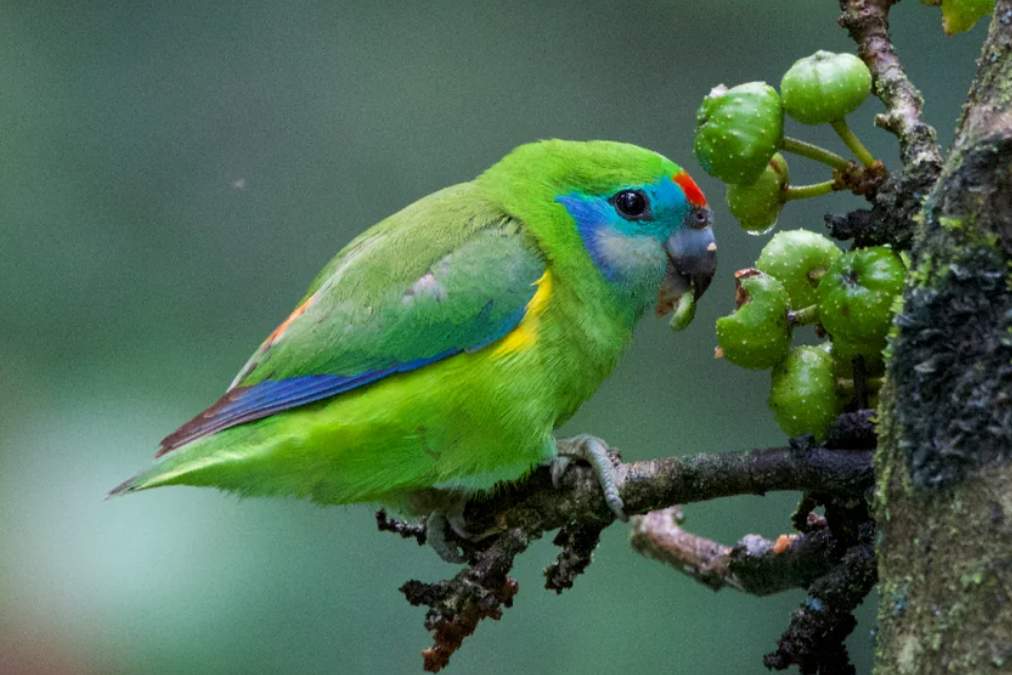Since the introduction of the Tree Sparrow (Passer montanus) from Europe to Australia in 1863–64, it has not spread far, reaching only western Gippsland and the southeastern Riverina, New South Wales, as far north as Cowra. Although not as tied to man as the House Sparrow, it still keeps urban parks and gardens planted with exotic trees and shrubs and has not intruded into natural woods and forests. This little bird is also known as a mountain sparrow. The size of the tree sparrow is approximately 140–150 mm in length.
Tree sparrows look like house sparrows in appearance and habits. However, they are a bit slimmer, have chestnut crowns and black cheek spots in both sexes, and are more retiring. Tree sparrows are social birds; they feed in small groups on the ground and in shrubbery on seeds, insects, and scraps. Further, at night, they cluster to roost in holes in trees, crevices in buildings, and dense thickets. Males court their mates by bowing, dispersing their wings, raising crown feathers, and chasing with tails cocked. Thus, the copulation is repeated, and, between each act, males hop about, without any of the soliciting from females that happens in House Sparrows.

There is no difference between the sexes. The crown is chestnut; the rest of the upper parts are chestnut-brown and streaked black. Wings and tail are brown, wing coverts have two white bars. Cheeks are white with black spot-on ear coverts; underparts are grey-white with a small black bib on the throat. Eyes are red-brown. Bill is black. Feet are light brown. The immature are duller than adults.
The call of the Tree sparrow is a mixture of twittering chirrups and chirps, cherr’p. ln flight a hard tek. The song consists of a series of chirruping chirps. Throughout the day, they chirp and chatter quietly in higher, shriller tones than House Sparrows, and deliver a simple chirruping song from a tree perch, sometimes in chorus. Flight, as in the House Sparrow, is fast and direct, on rapidly beating wings and sometimes slightly undulating.
Both sexes share nest-building, incubation, and the feeding of young, often rearing two broods a season. The birds nest through spring and summer, pairing permanently. Moreover, the Breeding and nesting seasons occur in September-January. Nest a compact dome of grasses, with a side entrance. The nest is decorated and lined with feathers; it is usually placed in a tree, in a bush, or, less regularly, a crevice in a building.
The tree sparrow lays 4 to 6 glossed, brown-white eggs, with fine dots of brown or chestnut. The eggs are oval in shape, about 20 x 14 mm. The incubation period is about 12–14 days, for both sexes. Both sexes fed the young, who fledged in 12–14 days. As far as its distribution, the tree sparrow is found in central Victoria, including Melbourne, and eastern Riverina, New South Wales. Its natural range extended from Europe to eastern Asia and the Moluccas. There are about seven races, but only one has been introduced in Australia.
Read More: House Sparrow Call and Facts







